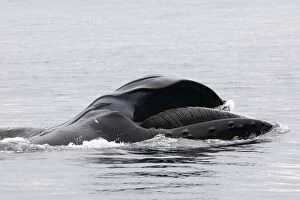Amphipodes Collection
In the pristine waters of Alaska's Inside Passage, a magnificent sight unfolds as humpback whales engage in their remarkable feeding behavior
All Professionally Made to Order for Quick Shipping
In the pristine waters of Alaska's Inside Passage, a magnificent sight unfolds as humpback whales engage in their remarkable feeding behavior. With mouths wide open and bodies lunging laterally through the surface, these gentle giants showcase their incredible adaptability. As they glide gracefully through the water, humpback whales employ an ingenious technique known as surface feeding. This involves opening their massive mouths to engulf vast quantities of prey in one swift motion. Their expandable throat grooves allow them to accommodate large volumes of water and filter out tiny organisms like amphipodes. Amphipodes, small crustaceans that inhabit marine environments worldwide, serve as a vital food source for these majestic creatures. Within the nutrient-rich waters of Frederick Sound and other areas along the Inside Passage, humpback whales find ample sustenance among swarms of these tiny creatures. The inside Passage provides an ideal habitat for both amphipodes and humpback whales alike. Its intricate network of fjords and channels creates a haven teeming with life. As currents carry nutrients from deep oceanic depths into this coastal paradise, it becomes a thriving ecosystem where predator meets prey. For countless generations, humpback whales have honed their hunting skills within these bountiful waters. Their mouth-opening lateral lunge is not only mesmerizing but also highly effective at capturing vast amounts of food in one fell swoop, and is truly nature's spectacle to behold. As we witness this awe-inspiring display off Alaska's coastlines, let us marvel at the delicate balance between species and ecosystems that allows such wonders to exist. The relationship between amphipodes and humpback whales serves as a reminder that every creature has its part to play in maintaining our planet's biodiversity.

